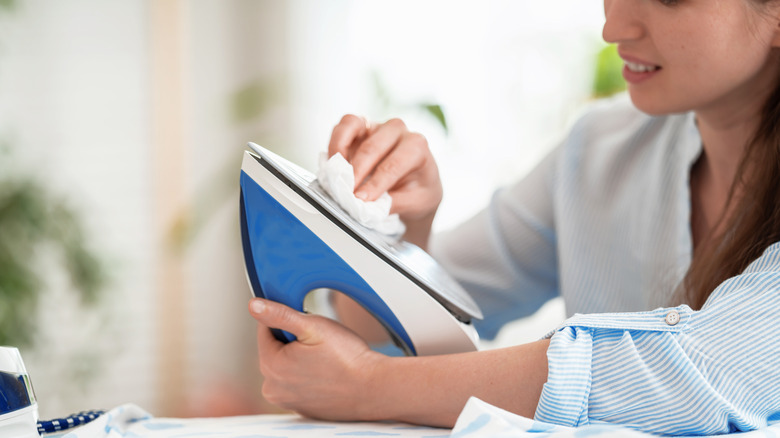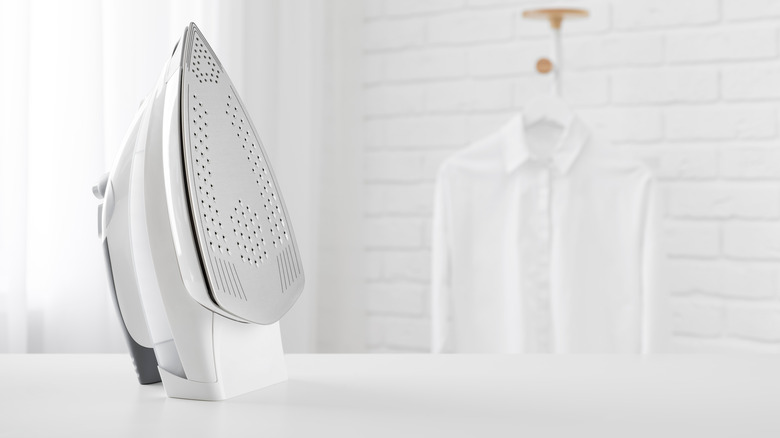Why You Should Use Salt To Clean Your Iron
Clothing irons are an easy and effective tool found in most households. They are most commonly used to get wrinkles out of clothes. However, whether you use your iron daily or just for special occasion clothes, over time, the bottom of the tool will start to get a little dirty and, eventually, quite gunky.
This is for a few reasons. First, even clean clothes may have a bit of surface dust and dirt on them, which then accumulate on the bottom of your iron. If you use other products like starch while ironing, the element will also get stuck on your iron. Eventually, as Home Depot notes, the water inside your iron can rust the outside.
There are plenty of methods of cleaning irons, some as simple as wiping off the bottom with a wet cloth, to tried and true DIY methods. There are even cleaning products specifically designed to get the gunk off your ironing device. But what do you do about tough, unrelenting spots that just won't buff out? One popular method includes just salt and a piece of paper or aluminum foil.
Get tough stains out with salt
This easy and cost-efficient method to clean your clothing iron is using plain coarse salt, Ironing Lab explains. However, they warn that this method should not be applied for average stains but only for tough build-up. This approach works because the coarse salt grains buff out the iron plate in a process similar to sanding. As such, it can damage the iron if there isn't a warranted build-up.
The method requires basic table salt, a piece of paper or aluminum foil, and an ironing board. A paper towel is gentler on the ironing plate, where aluminum foil gets tougher stains and dirt. To begin, turn your iron on to its highest setting. Then, lay your chosen material flat on your ironing board and add a layer of salt on top. Gently run your hot iron over the salt granules. You can tell it's working if the dirt, scorches, or grime starts to appear on the salt layer. Let the iron cool down, and use a damp cloth to wipe away any leftover residue.

